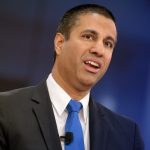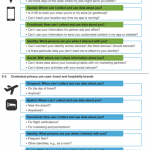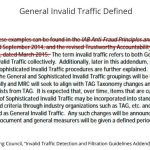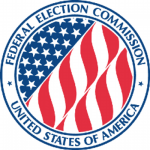The Feds Just Cleared The Way For 5G, But Don’t Hold Your Breath Waiting For It
The U.S. took the lead on cellular technology today when the Federal Communications Commission approved a plan making massive swaths of spectrum available for the next generation of wireless service, called 5G. Pushing the limits of physics, the promise of 5G is huge: data speeds from 10 to 100 times faster than what 4G offers (well over one gigabit per second for 5G) with virtually no lag, known as latency.
There will be some latency getting that technology into your hands, however, with some estimating that it could take up to 2020 just to settle on the standard, and then more time to get the technology into products. You sure won’t see 5G in the iPhone 7, expected in September. Think more about the iPhone 10, at best.
Think also about connected cars, refrigerators, drones—pretty much anything that has a battery or plug. The negligible latency might even enable a doctor in one location to operate on a patient in another location via Internet-connected robotic instruments. “If anyone tells you they know the details of what 5G will deliver, walk the other way,” said FCC chairman Tom Wheeler in a speech on June 20.
Also be wary of what cellular companies promise. Verizon has announced plans to offer 5G in 2017. South Korean carriers are aiming to have service in time for the 2018 Winter Olympics in Pyeongchang. These will probably be limited, preliminary services that come out well before the technical standards have even been set.
What the FCC did today is open up an electromagnetic frontier of frequencies. Now it’s up to wireless companies to homestead the territory. The U.S. will be the epicenter for 5G, because it’s the first place in the world to open up the ultra-high frequencies that will make these data speeds possible: a massive swath of microwaves between 27.5GHz and 71 GHz. This is fundamentally different spectrum than what’s been used before, a range from around 600MHz to 3GHz. The FCC also just announced the intention to make another 18 GHz of spectrum available for 5G in the future.
These high frequencies were essentially considered garbage spectrum due to the technical challenges of making them useful. Today’s announcement by the U.S. about plans for 5G is a bit like its announcement in 1962 about plans to go the Moon. We know it’s technologically possible—once we invent the technology.
The benefit of these high frequencies is that their short wavelengths (a few millimeters) can squeeze in a huge amount of data. The downside is that they can’t carry it very far—as little as a few hundred feet, vs. miles for today’s 4G networks. These waves don’t go through walls nearly as well, either, making use in cities a potential nightmare.
But something has changed since the first cellular networks with their long-wavelength transmitters went up: The Internet is everywhere. It’s no longer far-fetched to imagine cellular transmitters on every block and even every floor of an office building. Wi-Fi already works that way in many places. And antenna technology is advanced enough to focus and direct the beams very precisely, possibly even to get them around obstacles.
Still, it’s going to take a while to build a meaningful amount of micro cells, as well as necessary backhaul: the high-speed wired (generally fiber optic) networks that connects them all to the Internet. Everyone may not be happy about these transmitters popping up all over the place. “Not in my backyard” protests might have to be expanded to include front yard and side yard. As part of its 5G plan, Wheeler said that, “the Commission has streamlined our environmental and historic preservation rules, and tightened our ‘shot clock’ for siting application reviews.” Environmental and historic preservation advocates may not be as sanguine.
For rural areas, where it’s uneconomical to put a cell on every block (if there even are blocks), the FCC is opening up low and midrange frequencies with very wide channels of at least 200 MHz to push through more data at once. Unlike previous cellular technologies that are assigned to fairly narrow ranges of frequencies, 5G is literally all over the spectrum.
The variety of frequencies that make 5G possible poses a final challenge: figuring out how everyone will use them. Some of that spectrum will be licensed. Companies will pay a fee for exclusive use of it, and auctioning off spectrum rights takes time. Other frequencies will be shared; companies will have to negotiate agreements to make that work. A big chunk will be unlicensed, meaning it’s continually up for grabs. That’s how Wi-Fi works; and as anyone trying to get online at a big event knows, it works terribly. Carriers will have to figure out much smarter ways for networks and devices to coordinate in order to avoid electromagnetic traffic jams. (Coincidentally, the US military’s DARPA is sponsoring a competition to develop better technologies for sharing the airways.)
In short, 5G is a very good thing, but good things take time.
Fast Company , Read Full Story
(19)














